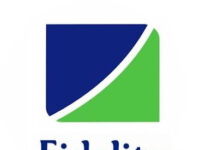Sterling Bank has a low dividend payout, having paid only 21 kobo as dividend in the last five financial years
Emerging details have shown there is currently tension tinged with outrage in the camp of investors and shareholders of Sterling Bank Plc led by Abubakar Suleiman, as the shares of the bank dipped drastically in the 2021 financial year.
If you invested N1 million in the bank’s shares at the beginning of the year 2021, you would have lost N281,000.00 of your investment as the its equity shed 28.10% of its value last year.
According to a report by BusinessLive, the lender’s share traded N2.10 on January 4, 2021, and was sold at N1.51 at the close of business on December 31, 2021, shedding 28.10% in the process.
The bank equity underperformed both the banking index and the Nigerian equity market which posted 0.87% and 6.07% returns in 2021.
The bank posted N9.47 billion post-tax profit as of September 2021, which was a 26.55% improvement to the N7.37 billion declared in the corresponding period in the prior year.
It raked in N156.89 billion as gross revenue in Q3 2021, 6.85% higher than the N146.84 billion it made in the same period last year. The income growth was driven majorly by 65.30% and 104.02% rise in net fee and commission income and other operating income respectively.
According to a report by BusinessLive, the lender’s share traded N2.10 on January 4, 2021, and was sold at N1.51 at the close of business on December 31, 2021, shedding 28.10% in the process.
The bank equity underperformed both the banking index and the Nigerian equity market which posted 0.87% and 6.07% returns in 2021.
In the last 365 days, investors have lost 21.50% of their investment in the bank, but they have gained 2.61% this year as its equity has gone up from N1.53 on January 4 to N1.57 at the close of the market on January 18.
Mrs Hadassah Isaac, an investment analyst and stockbroker with TRW Stockbrokers, explained that the market may be wary of those behind the bank, adding that the decline in Sterling Bank share reflected the market perception of its worth.
“It is what they are that the market will most times reflect,” she said, “The market looks beyond their books.”
Rasheed Yusuf, Doyen of the Nigerian Exchange, told our correspondent that the market may be perceiving Sterling Bank shares as overpriced or may not be favourably disposed to other fundamentals of the bank, which made it do develop negative sentiment against it.
Sterling Bank has a low dividend payout, having paid only 21 kobo as dividend in the last five financial years, which may be one of the reasons investors were averse to its equity last year.
It paid just 5 kobo as a dividend in the 2020 fiscal year.
The 28.44% growth in post-tax profit the bank declared in the third quarter of this year could not investors’ negative sentiment towards its stocks, nor did the N0.05 dividend the bank declared at the end of 2020 financial did not sway their interest in its favour.
The bank posted N9.47 billion post-tax profit as of September 2021, which was a 26.55% improvement to the N7.37 billion declared in the corresponding period in the prior year.
It raked in N156.89 billion as gross revenue in Q3 2021, 6.85% higher than the N146.84 billion it made in the same period last year. The income growth was driven majorly by 65.30% and 104.02% rise in net fee and commission income and other operating income respectively.
Net Operating Income went up by 19.4% to N67.9 billion, which was attributed to the growth in credit loss expenses.
Also, operating expenses increased by 18.8% to N58 billion from N48.9 billion in Q3 2020, driven mainly by FX revaluation losses and other mandatory regulatory levies.
Sterling Bank loans and advances improved by 13.4% to N676.8 billion, while customers deposits increased by 20.8% to N1149 trillion during this period.
More so, total assets rose by 12.7% to N1548, underpinned largely by the improvement in loans and advances.
Meanwhile, the increase in Sterling Bank risk assets came with its own challenge, as it had to make a 14.67% high provision for bad loans to the tune of N6.29 billion in Q3 2021 and its non-performing loan ratio went up to 2.0% during this period from 1.9% in December 2021.
However, the liquidity ratio improved to 37.7% from 32.5% in December 2020, while is above the 30% statutory requirement.
Sterling Bank loan-to-deposit ratio fell below the 60% regulatory threshold, posting 58.9% in Q3 2021 instead of the 62.8% it had in the prior period.
In the vein, the capital adequacy ratio declined to 14.3% from 18% in Q3 2020, though it was above the 15% regulatory benchmark.
Sterling Bank spent more in generating its income during this period as the cost-to-income ratio rose to 78.2% from 73.4% in Q3 2020, but the cost of risk lowered to 0.9% from 1.9% in the corresponding period in the previous year.
Earnings per share improved to 33 kobo from 32.5% in Q3 2020 and return on average assets inched up to 0.9% from 0.8% in Q3 2020.




























